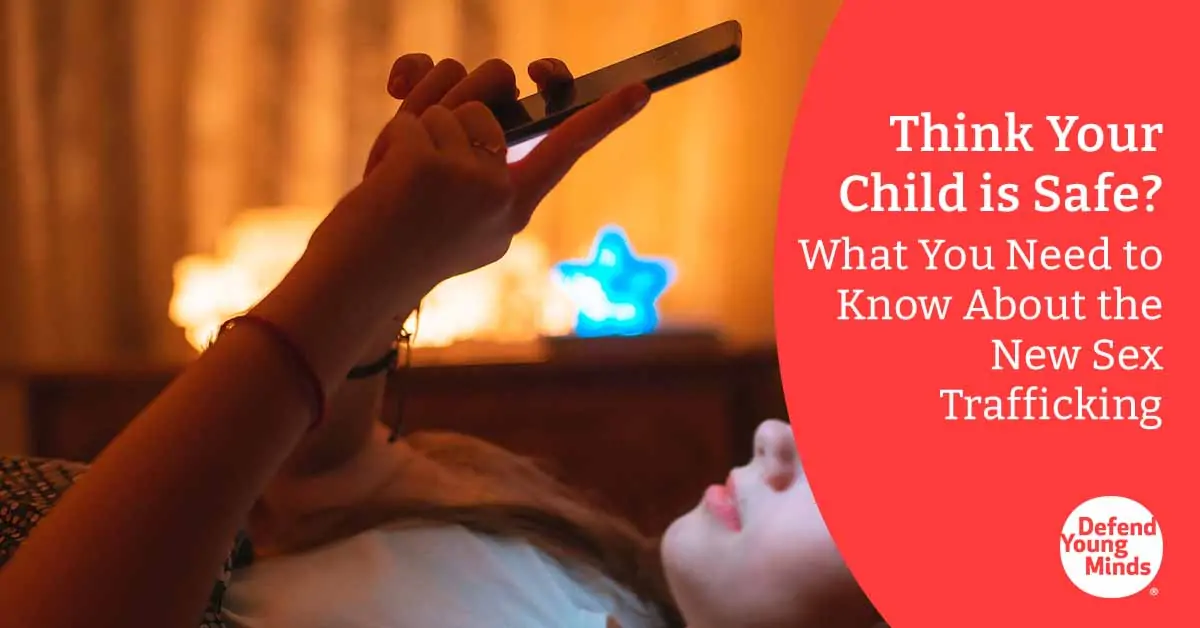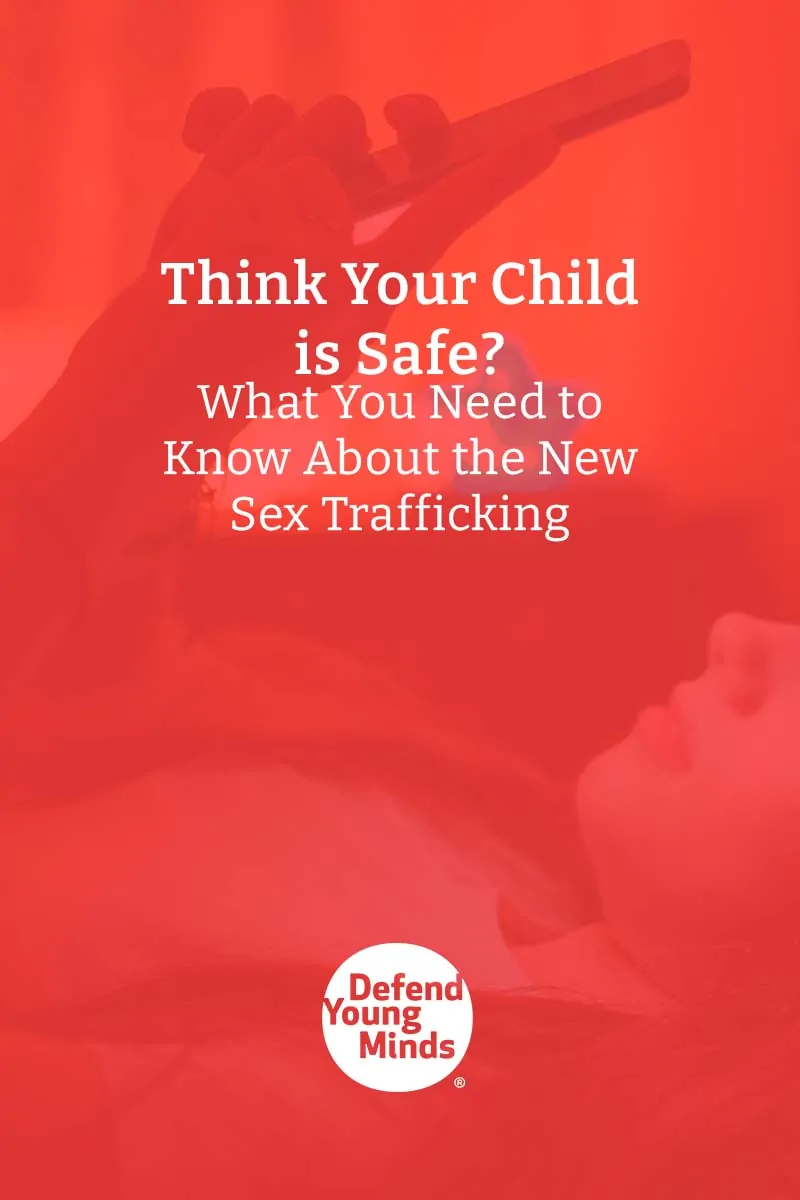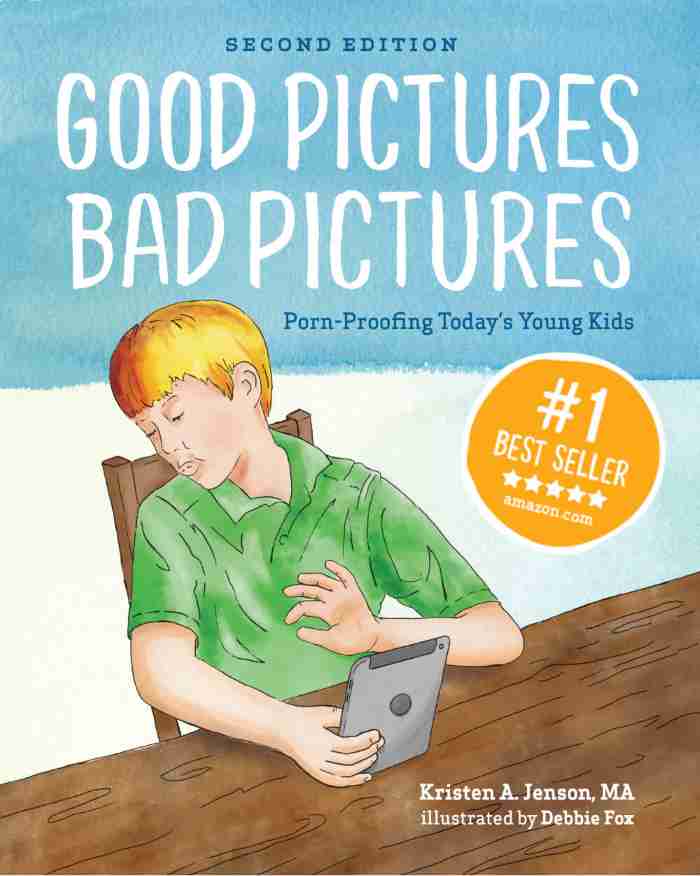

Think Your Child is Safe? What You Need to Know About the New Sex Trafficking
When you hear the words sex trafficking, what comes to mind?
Maybe a dramatic movie scene—a girl kidnapped off the street, thrown into a van, and whisked away to a foreign country. That’s the image most of us grew up with. But today’s reality is much scarier—and much closer to home.
Sex trafficking doesn’t always look like abduction. These days, it’s happening online. And many of the victims never leave their bedrooms.

What is sex trafficking?
According to U.S. law, sex trafficking is the exchange of any sexual act for something of value (known as a commercial sexual act) induced by force, fraud, or coercion.
But kids are different.
If the person is under 18, it’s automatically sex trafficking, even if there’s no force, fraud, or coercion.
And a victim need not be physically transported from one location to another for the crime to fall within this definition.
Traffickers often use currency that minors love—money, gift cards, rides, even digital currency or gaming skins.
Let that sink in.
If your 13-year-old sends a nude photo in exchange for a gift card or a ride that is sex trafficking.
But do most teens know that? Not at all. They often feel flattered or even empowered by the attention. That’s the twisted reality today’s kids are navigating.
Why kids today are more vulnerable to sex trafficking than ever before
Technology has changed the game. A generation ago, predators had limited access to children. Now? They have 24/7 access through smartphones, social media, video games, and chat apps.
Predators use sophisticated grooming tactics—and many are now powered by AI.
Yes, you read that right. Traffickers are using AI-generated scripts that are tested and refined to manipulate kids into sending explicit content or agreeing to meet in person. These scripts are designed to build trust, create emotional dependence, and bypass a child’s natural warning signs.
And they work! Better than human written scripts! Recent reports show that AI is more persuasive than humans so today's kids face exponentially greater risks.
Staca Shehan, vice president at the National Center for Missing & Exploited Children revealed chilling data.
“Last year, we received almost 5,000 reports of instances where generative AI was used or attempted to be used to exploit a child."
"So with the chat models that are available, we're seeing instances where an offender will enter text and then ask for help, restating that to appear as if they are a child, so that they can engage in communication online with other children and appear to be of similar age with the intent of exploiting them.
"We're also seeing offenders enter questions asking for guides or tutorials on how to groom or recruit children and do it more efficiently.”
The sheer amount of time kids spend online—combined with predators using AI to mimic, manipulate, and groom—makes them far more vulnerable to child sex trafficking than any generation before.
Real sex trafficking stories, real kids
These are not isolated cases. These are kids from ordinary families—kids just like yours.
- An 11-year-old Arizona boy with special needs, plus a dozen others, were sexually exploited through online games where they were enticed into performing sexual acts and received rewards such as Playstation gift cards and even a pizza delivery.
- A 13 year-old-boy was groomed and paid with Robux (a digital Roblox currency) in exchange for video and explicit naked photographs.
- A 17-year-old victim was groomed on Fortnite by a 41-year-old predator, paid with gifts such as gift cards and a cell phone.
- Young girls on TikTok are being offered money from strangers to send sexually explicit pictures and videos.
- Feet Pictures = $15
- Bra and Panties pictures = $25
- Boob pictures = $50-$75
- Full Nude photos = $100
- Masturbation video = $200
- Sex video with underage boyfriend = $500-$1000 dollars
“I know there are quite a few girls here locally who have made a grip (substantial money) selling pictures online,” said Officer Dave Gomez of Boise, Idaho.
These kids didn’t think they were being trafficked. They thought they had made a friend. Or were excited about making money. That’s how grooming works.
[[CTA]]
How porn fuels sex trafficking
Pornography is not just part of the child sex trafficking problem—it’s a major accelerant.
Kids who consume porn are:
- More likely to engage in sexting
- More easily manipulated into sending nudes
- More vulnerable to predators who use porn to normalize abuse
As Heidi Olson, sexual assault nurse examiner, put it: “Porn grooms girls to believe that being sex-trafficked is empowering.”
Girls especially are caught in a dangerous cultural lie: that their value comes from being “hot” and sending nudes is a form of power. This toxic belief leaves them vulnerable to exploitation disguised as attention.
And once a nude is shared, it often doesn’t stop there. Peers or strangers may reach out offering money, rides, or digital currency in exchange for more “content.” That’s commercial sexual exploitation. That’s sex trafficking.
Related:
Does Porn Empower Girls? The Big Lies that Hurt Your Daughter
How the Average Kid Gets Sex Trafficked: Top 6 Ways to Protect Them
Common myths that put kids at risk of sex trafficking
Many well-meaning parents still believe:
- “My kid would never…”
- “They don’t even have social media.”
- “This kind of thing is rare.”
But sex trafficking isn’t rare. In fact, the U.S. Department of Justice calls it pervasive. And your kid doesn’t need social media to be at risk.
We’ve seen it happen on:
- Roblox and Minecraft
- Fitbit app (Fitbit not required!)
- CapCut
- Discord and Telegram
If your child has access to online chat—even in a game—they’re potentially a target.
And here's the scariest stat: according to Russ Tuttle of The Stop Trafficking Project the average time it takes a child to agree to meet an online predator in person is just 8 days.
Related: Child Sex Trafficking–The Most Dangerous Myth and 3 Ways to Keep Your Kid Safe
What parents can do
You’re not powerless. Here’s how to protect your child from sex trafficking:
1. Teach them to reject pornography
A child educated about porn is better equipped to resist grooming. Lisa Thompson of the National Center on Sexual Exploitation said it best:
“There's no doubt in my mind — none, nada, zero, that a child who has been educated about how to reject pornography would also be safer from sex traffickers and sexual exploiters of any kind."
Use resources like Good Pictures Bad Pictures to start the conversation.
2. Delay social media
The longer you can delay exposure to platforms that allow contact with strangers, the safer your child will be. Experts recommend waiting until at least age 16.
3. Take a tiered approach to tech
Start with safer devices like kid-friendly smartwatches. Gradually introduce more complex tech with appropriate filters and monitoring.
4. Set layered parental controls
Filter your home network with router controls and filter individual devices. Use monitoring and alerting technology such as Bark.
5. Keep the conversations going
Talk about:
- Never sharing personal info online
- The dangers of online chats
- Never sending nudes and what to do if someone asks for one
6. Watch for warning signs
Is your child secretive about online activity? Do they have mood changes, extra spending money, or new “friends” they won’t talk about? These could be red flags.
You are the first line of defense for your child against sex trafficking
Sex trafficking doesn’t always come with warning sirens or missing person posters. It often hides behind screens, emojis, and fake online friendships. But here’s the truth: you have more power than you think.
Every conversation you have about online safety, every boundary you set, every time you teach your child to recognize and reject pornography—you’re building a wall of protection, ensuring they don’t face predators alone.



Good Pictures Bad Pictures
"I really like the no-shame approach the author takes. It's so much more than just 'don't watch or look at porn.' It gave my children a real understanding about the brain and its natural response to pornography, how it can affect you if you look at it, and how to be prepared when you do come across it (since, let's face it... it's gonna happen at some point)." -Amazon Review by D.O.







